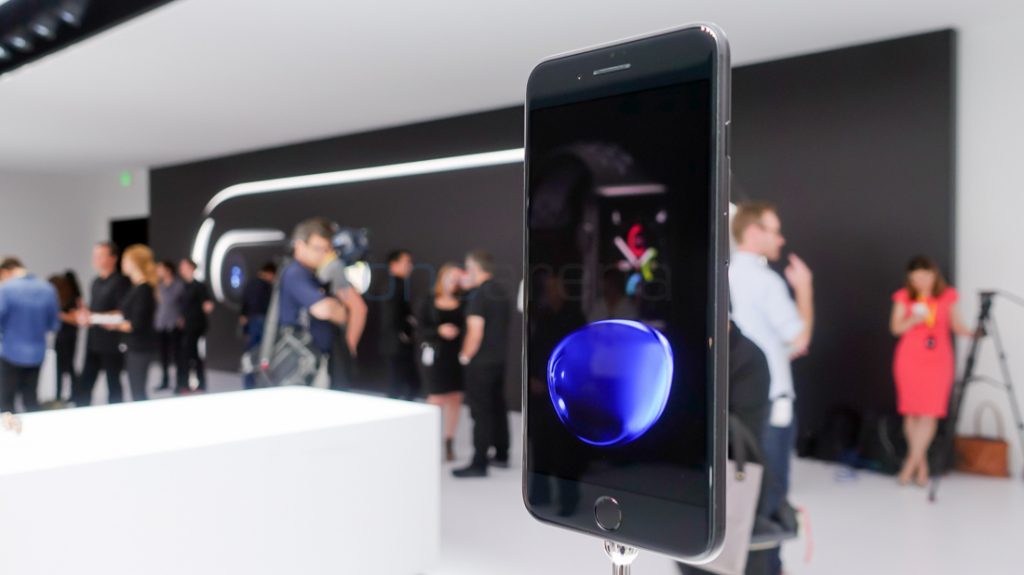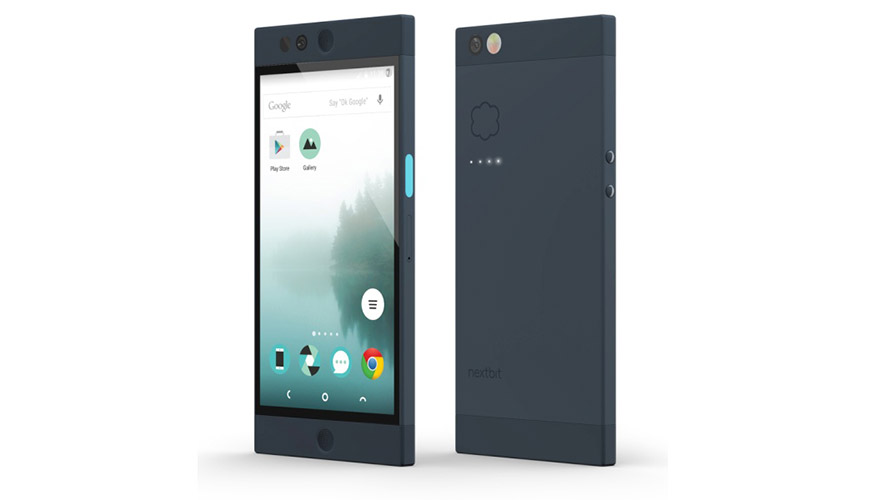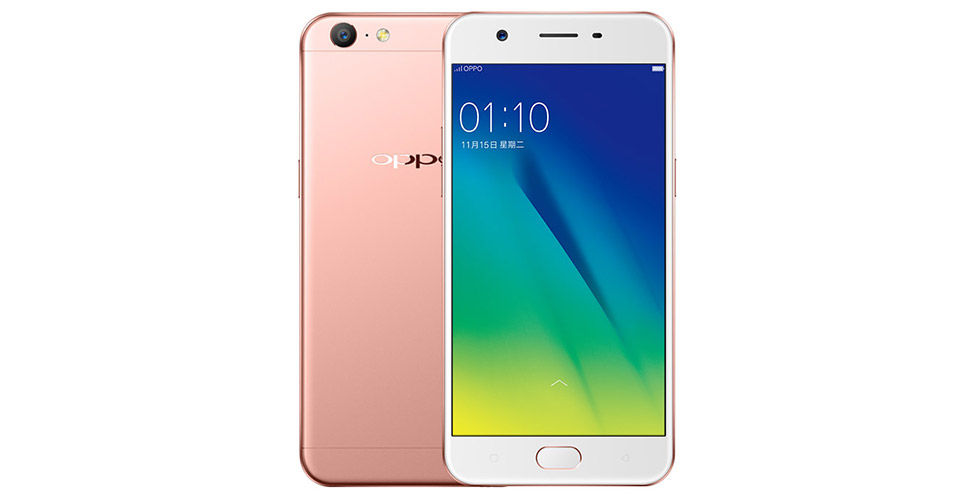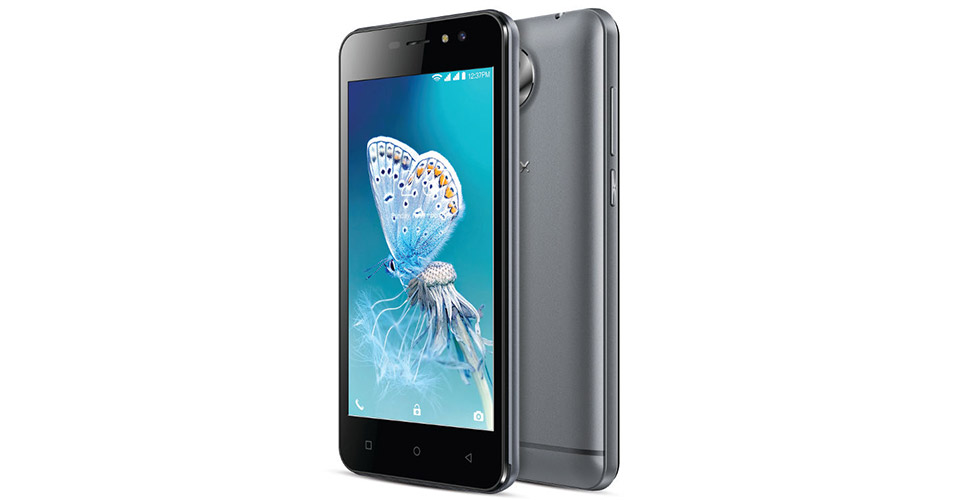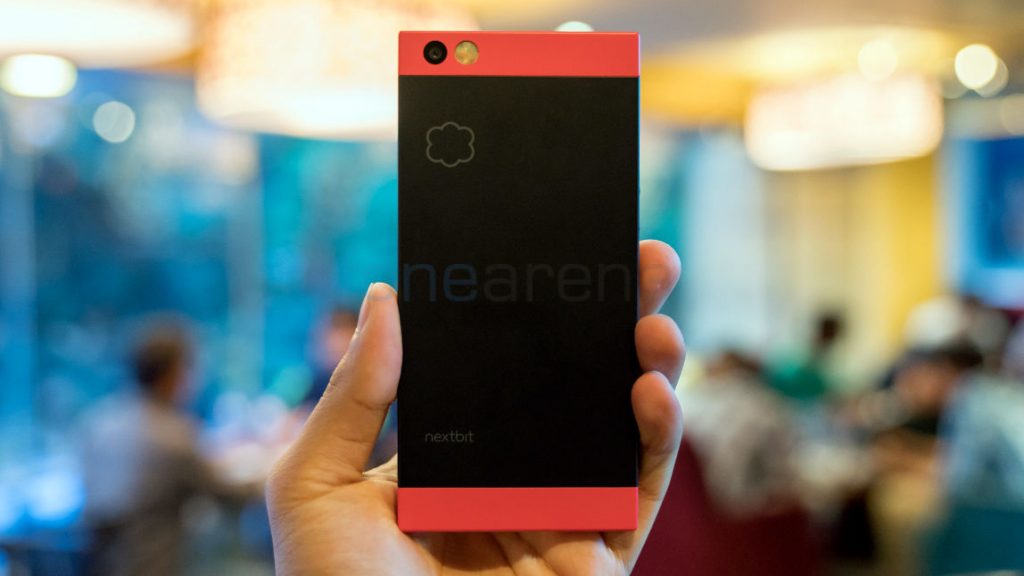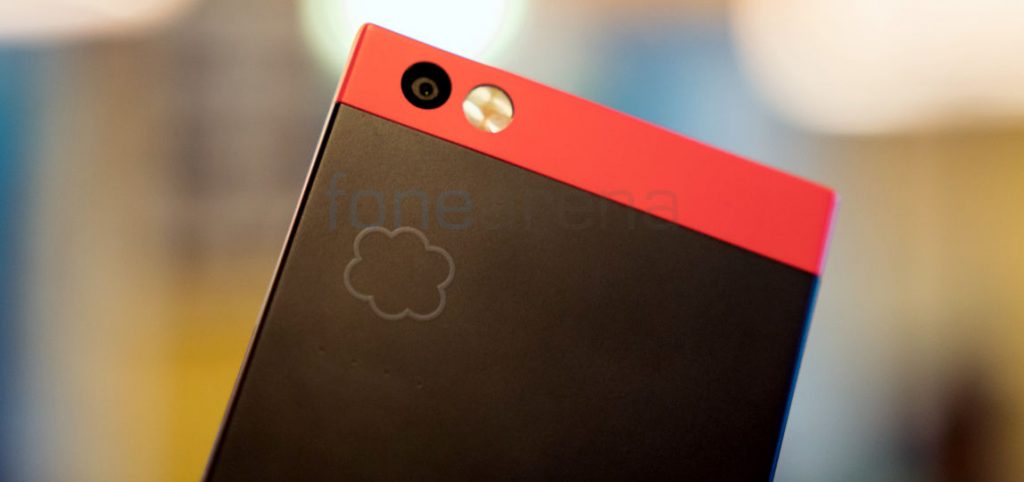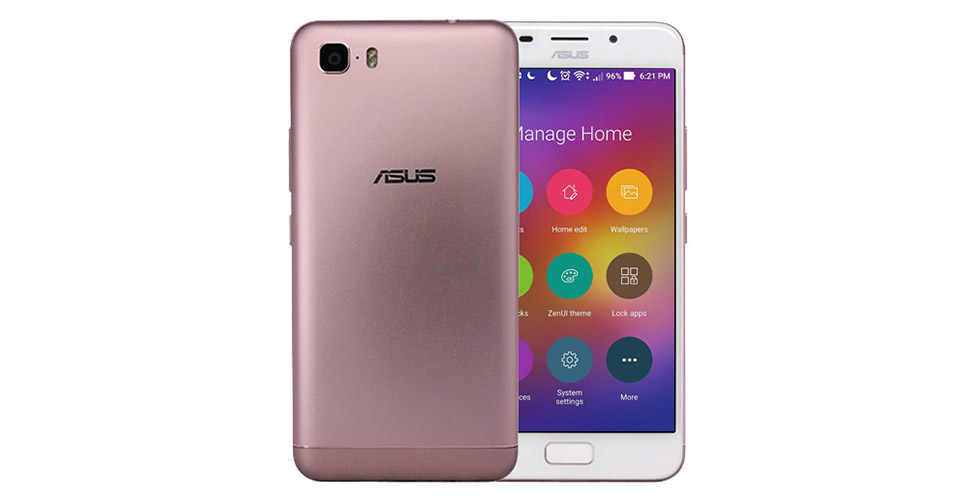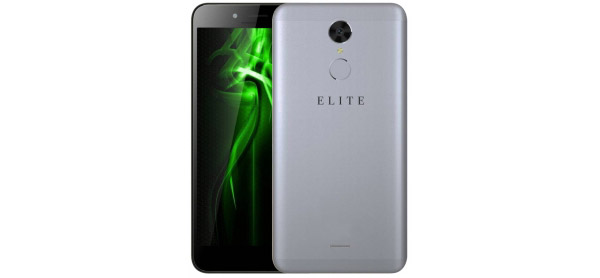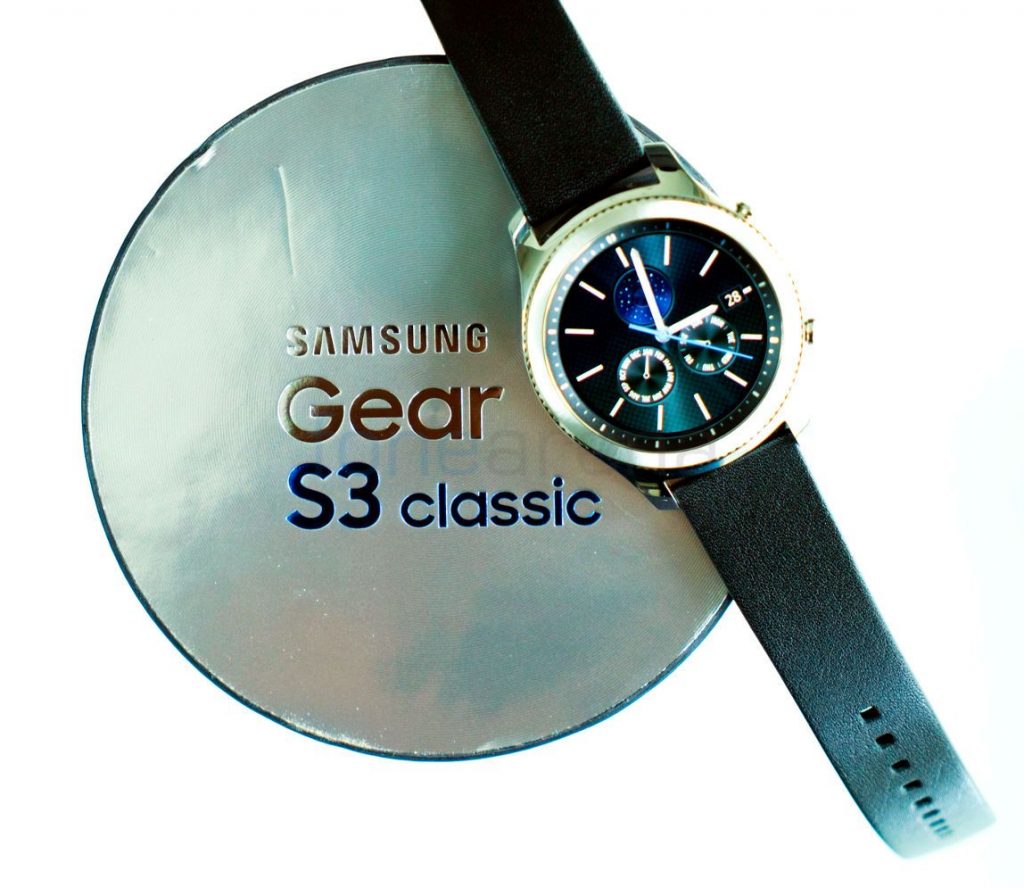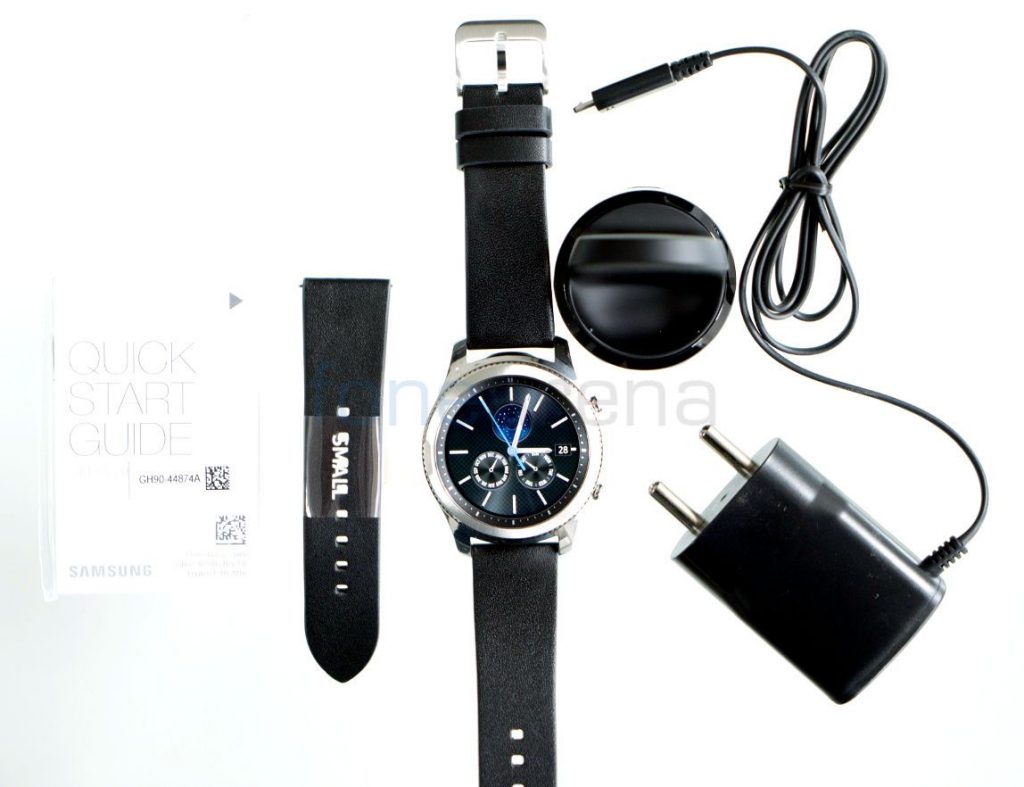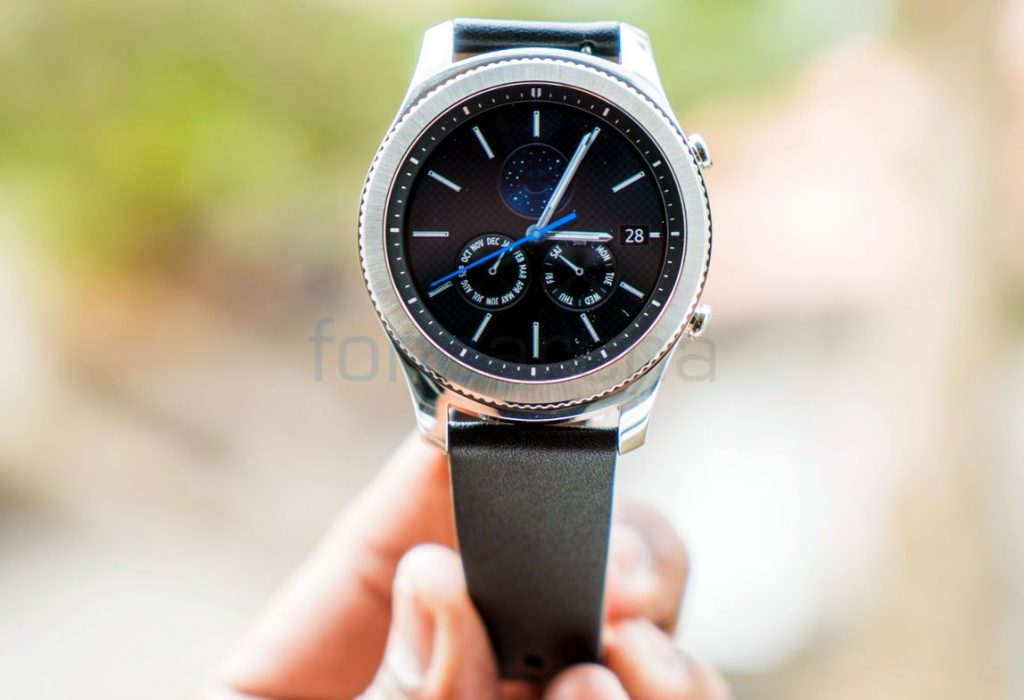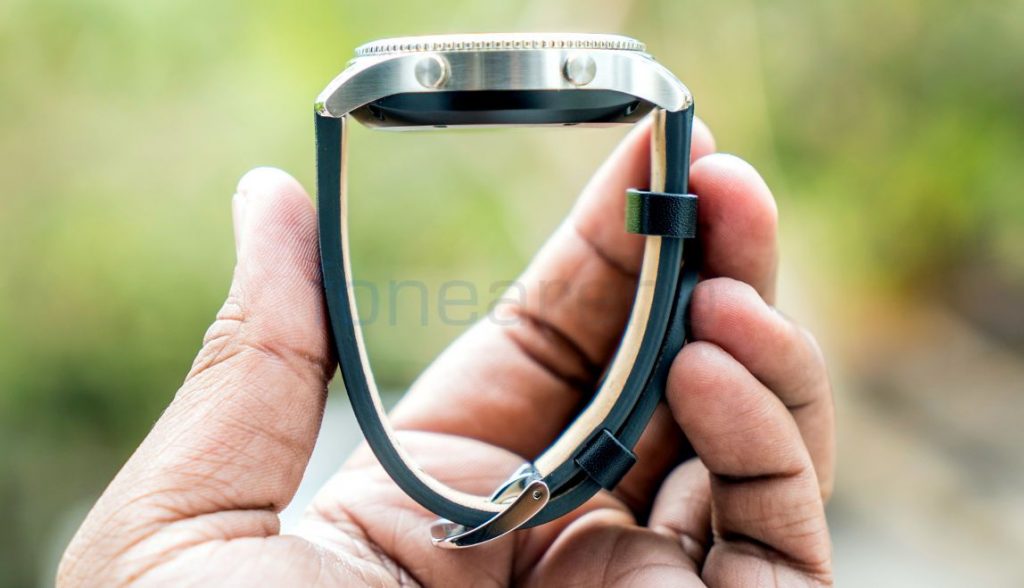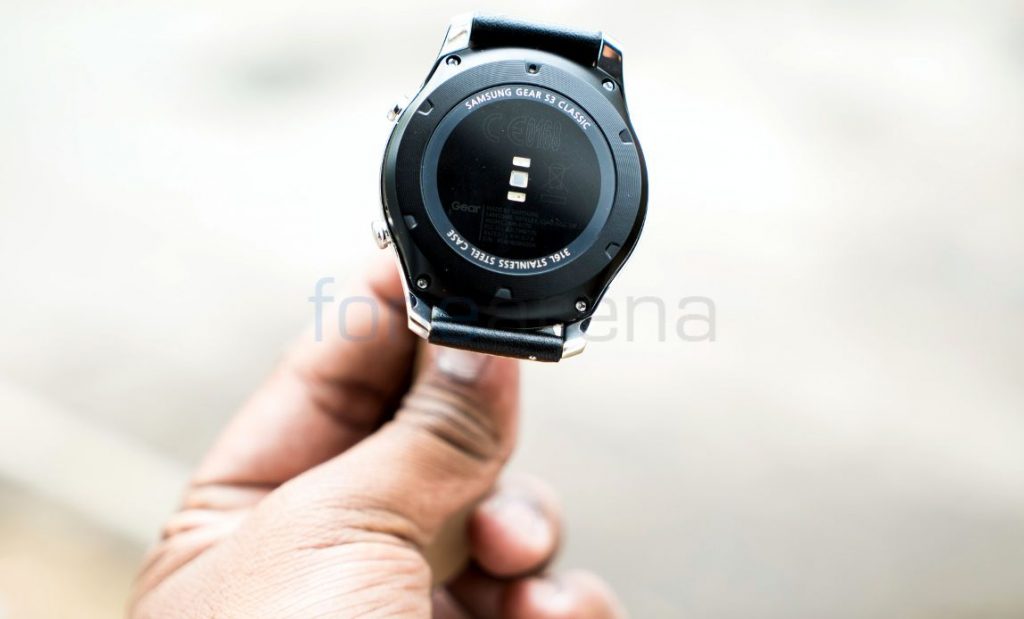![]()
Samsung is expected to launch Galaxy S8 and S8 Edge flagship phones at Mobile World Congress early next year. Here's a round-up of all we know about these new flagships and if they'll help Samsung bury the ghost of the Galaxy Note 7 in the coming days.
Samsung is yet to find out the exact cause of Galaxy Note 7 fires even as it gears up to launch the Galaxy S8 and S8 Edge early next year.
Samsung Galaxy S8 specifications (based on leaks)
- There will be two variants of Samsung's latest flagship: Galaxy S8 and S8 Plus
- No 'Home' button, according to latest leaked renders, but we would take that with a pinch of salt.
- Dual-curved bezel-free 5.7-inch and 6.2-inch edge to edge displays
- Powered by Qualcomm Snapdragon 835/ Exynos equivalent, Adreno 540 GPU
- Rear-mounted fingerprint sensor
- 256GB of storage, 6GB of RAM
- Both Galaxy S8 and S8 Plus will feature Siri-like AI assistant code-named Bixby
- Can be used to make contactless payments
- On sale date slated to be April 18
- Type-C charging
- Gear 360 Pro, a modified version of the Gear 360 camera to be offered alongside phone
New update: Samsung Galaxy S8 and S8 Plus to feature 3,250 mAh and 3,750 mAh batteries
A number of experts and tech analysts have so far wondered if Samsung should retain the battery that powered the Galaxy S7 in the Galaxy S8 or if the company should take the risk of adding a larger battery to offer longer life to the upcoming flagship. Taking the latter option could expose users to the same risk which made the Galaxy Note 7 vulnerable but retaining the former option would mean that the Galaxy S8 would offer no upgrade as far as battery life is concerned.
It now seems that Samsung is taking the middle path and introducing a battery which isn't too large but at the same time, is a bit more powerful compared to the 3,000 mAh one in the Galaxy S7. A new report from South Korea suggests that Samsung has asked suppliers to deliver 3,250 mAh and 3,750 mAh batteries for the Galaxy S8 and the Galaxy S8 Plus flagships respectively. Both batteries feature 250 mAh and 150 mAh more capacity respectively compared to their predecessors, and seem like perfect fits for the new flagships which will also feature advanced battery charging and power efficient technologies.
Samsung will launch the Galaxy S8 and Galaxy S8 Plus on 29th March and will announce a number of fresh features and technologies, but considering how the Galaxy Note 7 fared, the focus of the company as well as analysts and buyers would be on the batteries and how they will be designed to ensure safety of users in the long run.
New leak shows Samsung Galaxy S8's massive 5.8-inch bezel-free display
A new Samsung Galaxy S8 image published by Techradar gives up a decent glimpse on how the Galaxy S8 will look like once it is launched. The phone's bezel-free design concept seems to have worked wonders since, despite being slightly smaller than the Galaxy S7, the phone fields a massive 5.8-inch display with a unique 18.5:9 aspect ratio.
Apple's iPhone 8 may feature a similar design concept but because it will not launch until September, Galaxy S8 and Galaxy S8 Plus will enjoy a free run for around six months unless other phone makers like Huawei, LG and HTC join the bezel--free display fray. Based on existing leaks, it seems these phone makers aren't willing to push the boundaries as yet and they may prefer to wait and watch how the new design concept is interpreted by users in the long run.
Samsung Galaxy S8 and Galaxy S8 Plus to launch 29th March
Samsung Galaxy S8 and S8 Plus will launch on March 29 instead of at Mobile World Congress in February, said Evan Blass, a noted leakster on all things mobile.
The fact that the devices will launch on March 29 goes well with existing rumours on them going on sale 14th April. Samsung may put up the phones for pre-orders in the meantime while shoring up production. The two phones will be no different from the Galaxy S7 and S7 Edge when it comes to dimensions but will feature significantly larger 5.8-inch and 6.2-inch Quad HD Super AMOLED displays thanks to bezel-free design concepts.
This is the Samsung Galaxy S8, launching March 29 https://t.co/lQZ0K0q2MA pic.twitter.com/dlusRMX4YH
— Evan Blass (@evleaks) January 26, 2017
Blass goes on to add that the two phones will feature USB Type-C ports instead of USB 2.0 in the Galaxy S7 and S7 Edge. Writing for Venture Beat, he says that the large displays will feature an aspect ratio of 18.5:9 and their screen to body ratio will be around 83%.
Variants of the Galaxy S8 and S8 Plus will feature Qualcomm's Snapdragon 835 and Exynos processors alternatively but their batteries will be 3,000 mAh and 3,500 mAh respectively, same as the ones in the Galaxy S7 and S7 Edge. Despite the similarity, the power-efficient processors, USB Type-C ports and Quick Charge 4.0 will ensure longer battery life and quick charging compared to existing phones.
Blass adds that the Galaxy S8 will feature a 12-MP rear camera and a 8-MP front cam. Samsung is expected to feature its Dual Pixel technology in the rear cam and may make the new one even better than its predecessor in terms of autofocus, image and video stabilisation and pixel density. The front camera will be integrated with an Iris Recognition sensor and will thus act as another mode of biometric authentication.
Samsung will not introduce the Galaxy S8 at Mobile World Congress next month
For the first time in many years, Samsung's flagship smartphone will not grace Mobile World Congress in Barcelona due to take place next month.
Samsung today revealed a number of steps it is taking to prevent incidents which killed the Galaxy Note 7 ever occurring with its smartphones again. The company said that it has 'implemented a broad range of internal quality and safety processes to further enhance product safety including additional protocols such as the multi-layer safety measures and 8-Point Battery Safety Check.'
According to Reuters, incorporating these processes into the Galaxy S8 and Galaxy S8 Plus may take some time because of which Samsung will not be introducing these flagship handsets at Mobile World Congress next month. Koh Dong-jin, President of Mobile Communications Business at Samsung told Reuters that the Galaxy S8 'would not be unveiled at the Mobile World Congress trade show in Barcelona beginning Feb. 27' and that 'Samsung Electronics will be working hard to regain consumer trust.'
According to industry sources, the release date of Samsung's Galaxy S8 and Galaxy S8 Plus handsets have been pushed back to mid-April and that Samsung has requested component suppliers to deliver components for as many as 60 million Galaxy S8 handsets this year. This basically means that Samsung thinks it will be able to outperform sales of the Galaxy S7 by more than 10 million units and cross the 60 million mark for the first time since the success of the Galaxy S4 back in 2013, of which Samsung sold 70 million units.
Samsung's Bixby to enable visual search via Galaxy S8 camera
Samsung's upcoming digital assistant Bixby will be capable of performing a lot more functions than enabling contactless payments via Samsung Pay Mini.
According to Sammobile who broke the rumour, Bixby will be able to perform a range of functions which will include controlling native apps, conducting payments as well as letting users conduct visual search using the Galaxy S8 camera. The report states that the Galaxy S8 and Galaxy S8 Plus cameras will feature a Bixby button which will help you know about things by pointing your phone camera at them.
Once a Galaxy S8 owner will point his camera at something, Bixby will analyse it and try to identify the object or text and inform the owner accordingly. The report adds that users will be able to make use of this feature to buy things that they come across using Bixby. Bixby is slated to be unveiled along with Samsung's upcoming flagships in late February or March so we will have to wait to find out if the AI assistant will indeed feature so many functionalities, given that it is a new software untested in practical life.
Galaxy S8 and Galaxy S8 Plus dimensions leaked online
While we've heard a lot about the Galaxy S8 being as large as the Galaxy S7 Edge or featuring a display panel much larger than existing phones, we now have a detailed description of how big the Galaxy S8 and S8 Plus will be, thanks to a new leak coming from GSM Arena.

According to the new report, the Galaxy S8 will feature dimensions of 140.14 x 72.20 x 7.30mm, making the phone extremely slim as well as a bit short compared to the Galaxy S7. However, thanks to a bezel-free screen, the display will be as large as that of the Galaxy S7 Edge or possibly larger. Since Galaxy S8 will feature a curved display at both ends, the display will also be wider than the one in the Galaxy S7.

Samsung's larger Galaxy S8 Plus will feature dimensions of 152.38 x 78.51 x 7.94mm, making it slightly thicker but much taller compared to the S8. However, the bezel-free screen will allow it to sport a massive 6.2-inch display which will be enough to meet your multimedia and gaming needs. The dimensions have come from a third party source so we cannot be sure if they are correct but they do check out with existing leaks and rumours.
Samsung Galaxy S8 will bring in improved selfie camera and S Health app
According to the South Korean Electronic Times, among the many upgrades to feature in the Galaxy S8 will be one for the front camera. With the new flagship, Samsung will, for the first time, introduce autofocus to the front camera lens, thus letting Galaxy S8 users snap selfies in the blink of an eye. The report further claims that Samsung may also include an iris scanner in the front camera to enable users to unlock their phones using Iris recognition which was also present in the ill-fated Galaxy Note 7.
According to Sammobile, Samsung is also planning on subjecting its S Health app to a major overhaul. Updates to the app will soon include integration with WebMD and Amwell, two medical information services. Thanks to the integration, users will be able to book doctor appointments, search for diseases and symptoms, conduct video conversations with doctors and search for drugs and pharmacies. This way, it will be a lot easier for users to get immediate treatment or consultation for their ailments and maintain their health at all times. The app will also allow users to maintain a record of their medical history including prescriptions and will let them access insurance services whenever required. It remains to be seen if such features will be available to users in all regions or in select countries.
Samsung Galaxy S8 to feature the best dust and water resistance
Citing industry sources, South Korean publication The Investor recently stated that the Samsung Galaxy S8 along with a number of other Galaxy smartphones will feature the highest level of dust-proof and waterproof protection among smartphones. The level of waterproofing in the Galaxy S8 could be similar or better than in the Galaxy S7 which, thanks to an IP68 rating, can survive under 1.5 metres of water for as long as 30 minutes.
Aside from the Galaxy S8, IP68-level waterproofing may also be integrated into cheaper Galaxy handsets like the A3, A5 and A7 as well as Galaxy J-series phones which are the cheapest of the lot. IP stands for Ingress protection and the first digit corresponds to protection level from dust and the second digit corresponds to protection level from water. As of now, IP68 is the most advanced standard of dust and waterproofing and is present in a number of smartphones including Samsung Galaxy S7 and LG X Calibur.
A new standard named IP69K also exists which ensures that devices can stay safe even when subjected to steam-jet cleaning but it has not been implemented among smartphones as yet. With a number of new smartphones yet to be launched this year, it will be interesting to see if any manufacturer will be willing to take up the challenge and launch the ultimate protected gadget.
Source: The Investor
Samsung to introduce personal assistant Bixby with Samsung Pay Mini in Galaxy S8
Samsung Pay Mini, a simplified contactless payments interface which will work on all Android phones, iPhones and PCs, will be armed with Samsung's new digital AI assistant- Bixby. Even though not much is known about Bixby since Samsung hasn't announced it officially, what some news sites have gathered is that Bixby will let Samsung Pay Mini users to send money to contacts using voice commands.
Ex-flagship phones that now cost less than £400
By introducing Samsung Pay Mini, Samsung wants to ensure that all Samsung phone owners, including those of the premium Galaxy S8 as well as low cost A-series and J-series phones, will be able to make contactless payments. Once you download Samsung Pay Mini, you can add as many cards to it as you want and like with Samsung Pay, you will need to undergo fingerprint certification or create a new ID and password.
While Samsung Pay relies on a different payment gateway to process online payments, Samsung Pay Mini will ensure that the payment gateway will automatically process such payments and will store accompanying receipts. It will be interesting to see how Bixby will make Samsung Pay Mini more intuitive and if its functions will extend to Samsung's other features and apps as well.
LG G6: Leaks, features, pricing and release date
Samsung believes it can sell 60 million Galaxy S8 phones for the first time in four years
According to The Investor, Samsung has requested component suppliers to deliver components for as many as 60 million Galaxy S8 handsets this year. This basically means that Samsung thinks it will be able to outperform sales of the Galaxy S7 by more than 10 million units and cross the 60 million mark for the first time since the success of the Galaxy S4 back in 2013, of which Samsung sold 70 million units.
Nokia 8: Specs, features and availability
"As the release date of the S8 has been postponed to mid-April, Samsung seems to have set a more ambitious goal than before to make up for the loss caused by the Note model, which has so far led Samsung's smartphone business every first quarter," said an industry source to The Investor.
Samsung's ambitious prediction could be a result of stellar performance displayed by the Galaxy S7 and S7 Edge phones which sold admirably well even after the Galaxy Note 7 fiasco. Thanks to a high-pitched marketing campaign, Samsung sold enough units to boast a 9.2 trillion won profit in the fourth quarter of 2016. Samsung is also introducing a number of new features with Galaxy S8 which should bring in additional demand for the upcoming flagship.
Samsung Galaxy S8, S8 Edge to go on sale from 18 April
The rumours were so right. Given how Samsung took an age to finally sort out why the Note 7 handsets went up in flames (Samsung is expected to announce the reason next week), development programme for the Galaxy S8 flagship phone was naturally delayed so that Samsung didn't commit the same mistakes with its last dice.
Apple iPhone 8: Leaks, features, pricing and release date
“Since the phones have a record of burning up, it needs time for these phones to be verified as safe. How safe the phones turn out to be is more important than any hardware innovation. It will take about a month or two for people to actually start opening their pockets,” said Greg Roh, an analyst at HMC Investment Securities Co. to the Bloomberg back in November. It was then stated by many sources that the Galaxy S8 launch will take place in March or April instead of at Mobile World Congress in late February. Turns out they were right.
Popular Samsung-related news blog Sammobile today virtually confirmed (via deep-rooted sources) that Samsung will not unveil the Galaxy S8 or S8 Edge until March and the devices will not go on sale before 18 April. The launch is expected to take place anytime in March in New York at a time when most competing flagships like LG G6 and HTC 11 will be in consumers' hands.
Can the U Ultra smartphone be HTC's comeback ticket?
Whether or not this has anything to do with the Galaxy Note 7 issue cannot be confirmed as yet but the fact that Samsung will be skipping MWC for the first time in many years points to the fact that the company may want to be extra cautious this time. The confirmation regarding the S8 launch date hasn't come from Samsung as yet so we will wait for any indications from the company to that effect in the near future, along with the company's clarification on the Note 7 issue.
Samsung Galaxy S8 renders reveal lack of home button and a bezel-free display
Samsung Galaxy S8 has been subjected to so many leaks and exclusive reports so far that any Samsung fan would be able to visualise the upcoming flagship in detail. Recent reports on the Galaxy S8 have covered a bezel-free display, wireless earbuds, lack of a 3.5mm headphone jack, dual curved display and many other features. Naturally, with so many details available, some Galaxy S8 renders were just around the corner and they have finally arrived.


Veniamin Geskin, a graphic designer, recently created several rengers of the Galaxy S8 based on available leaks and rumours. The final images are hence approximate depictions of how the Galaxy S8 will look like provided all the rumours and leaks are true. The images show a dual-curved bezel-free display, lack of a home button and an overall design very similar to that of the Galaxy Note 7.
Samsung to roll out AirPod-like wireless earbuds for the Galaxy S8
According to sources who are well-versed with Samsung's product development, the South Korean giant will be launching wireless Bluetooth earbuds similar to Apple's AirPods for its next flagship the Galaxy S8. Added to the rumour that the Galaxy S8 may lack a 3.5mm headphone jack, it seems Samsung is keen to follow Apple's path by bringing in fresh wireless audio technologies along with wired ones which will be compatible with USB Type-C ports. Earlier today, Samsung confirmed that its 2017 Galaxy A series phones will feature USB Type-C ports instead of MicroUSB ports.
Last year, Samsung launched its first modern wireless earbuds which it named the Gear IconX cordless earbuds. Not only does Gear IconX offer advanced audio quality, it can also double up as a fitness monitor and can provide feedback during your fitness regimen. Such feedback includes duration of an exercise, distance covered, calories burned and heart rate. According to Samsung, you will be able to sync the IconX with its S Health app as well.
Gear IconX features touch controls to let you control the volume and change tracks by tapping on the earbuds. It can also store as many as 1,000 tracks to let you listen to music while you work out. Available in Blue, Black and White, Gear IconX is slightly more expensive than Apple's AirPods at £169 apiece but it will be interesting to see how different Samsung's upcoming wireless earbuds will be compared to the Gear IconX and if it will be priced around the same figure.
Samsung Galaxy S8, S8 Edge to sport fingerprint sensors on the back
We've heard before that Samsung will make the Galaxy S8 and S8 Edge devices completely 'bezel-free' and that the displays will cover the entirety of the handsets' faces. This will ensure that owners of these phones will get to enjoy maximum surface area to watch videos and play games without having to purchase very large devices. It was also reported previously that while Samsung will get rid of the home button, the fingerprint sensor will be embedded inside the touchscreen display to let users unlock their phones and perform a range of functions without using the home button.
However, a new report is now claiming that Samsung won't embed the fingerprint sensor within the display but will install the fingerprint sensor on the back of the upcoming phones, which means that you'll be able to unlock these phones by tapping on the back instead of the home button.
Samsung recently announced that it will integrate fingerprint sensors in all it's smartphones which will launch in 2017. This is to ensure that all Galaxy device owners will be able to use Samsung Pay to make contactless transactions, and these will include the budget-priced galaxy J series phones as well. It will be interesting to see if Samsung will implement the 'fingerprint sensor on the back' concept in all Galaxy phones or whether it will be selectively implemented.
New update: Galaxy S8, S8 Edge launch may take place in April!
The latest news coming from Bloomberg concerning Samsung's upcoming flagship phones is that thanks to a stringent testing policy which Samsung has implemented after the embarrassment caused by the Galaxy Note 7 fiasco, the launch of the two phones could get delayed from February to April, a fact which some rumour columns had prophesied a few months ago. This would mean that HTC, LG and Huawei will get to launch their respective flagship phones at Mobile World Congress in February without encountering stiff competition from Samsung's flagships.
“Since the phones have a record of burning up, it needs time for these phones to be verified as safe. How safe the phones turn out to be is more important than any hardware innovation. It will take about a month or two for people to actually start opening their pockets,” said Greg Roh, an analyst at HMC Investment Securities Co. to the Bloomberg.
The report also states that the Galaxy S8 and Galaxy S8 Edge will feature 'all-screen' designs which will mean no bezels and no home buttons on their faces. As such the enhanced surface area will offer larger view of pictures and videos and will make playing games and using apps easier. The home button's functionality could get embedded in the lower part of the display to let users access the phones the way they have been accessing existing Galaxy phones. Both phones will feature 'wraparound displays' using organic light-emitting diode technology which will also mean a significant addition in the looks department.
Source: Bloomberg
Samsung to ditch 3.5mm headphone jack with Galaxy S8, S8 Edge
As per a new report, Samsung may launch Galaxy S8 and Galaxy S8 Edge phones without 3.5mm headphone jacks and may use USB Type-C ports instead. The move will follow Apple's and Lenovo's decisions to use Lightning and USB Type-C ports as audio ports instead of standard 3.5mm headphone ones.
Samsung's decision to get rid of the 3.5mm headphone jack will allow it to make it's upcoming Galaxy flagships thinner than existing ones, and thereby more sleek and easy to keep in your pocket. It is also possible that removal of the 3.5mm port will help free up more space to a larger battery. However, the introduction of the USB Type-C audio port in Galaxy devices begs a question on whether Samsung has decided that 3.5mm ports aren't really helpful or have they aped Apple again after introducing non-removable batteries and removing USB ports in the Galaxy S6 a couple of years ago.
If the report is true, then Samsung will either supply earphones with Type-C plugs or will supply 3.5 mm to Type-C connectors with the Galaxy S8 and Galaxy S8 Edge. You will be able to use wireless headphones as well and the presence of a wireless charging pad will make it easier for you to charge the phone while you're listening to music.
Samsung Galaxy S8, S8 Edge to feature up to 6GB of RAM, 256GB of storage
The latest revelation coming in from China concerning the Galaxy S8 and S8 Edge handsets is that they may feature up to 6GB of RAMs along with 256GB of internal storage. If this turns out to be true, the upcoming handsets will equal the OnePlus 3T in terms of RAM capacity and the latest iPhones in terms of installed storage space. This way, Samsung will be offering you the best of both which will make your choices easier after the next line of flagship phones are launched at MWC in February.
While 256GB of internal storage will save you from sending your confidential folders to the cloud, 6GB of RAM could offer enough fluidity to your phone to enable it to handle multiple operations at the same time without freezing up on you. While we are not sure if the rumour is correct, if it does turn out to be correct, then it would mean Samsung doesn't want to leave any stone unturned to offer the best phone that can be and also to banish the ghost of the Galaxy Note 7 forever.
Samsung Galaxy S8 will be powered by Qualcomm's Snapdragon 835 chip
Samsung's upcoming Galaxy S8 flagship phone will feature Qualcomm's new Snapdragon 835 processor, says a recent leak from China. Qualcomm recently unveiled it's latest 10nm FinFET-based Snapdragon 835 processor which the company said will power a number of flagship phones from next year. The processor was developed in partnership with Samsung and is the direct descendant of the Snapdragon 820 chip.
As per a new leak which first appeared on Chinese social media website Weibo, Samsung's upcoming Galaxy S8 phone will be powered by the Snapdragon 835 processor, but the leak doesn't mention if all Galaxy S8 handsets will be powered by the processor or whether only some regional variants will feature them. Samsung has used both Exynos and Snapdragon processors in it's flagship phones so we'll assume the same in the meanwhile until we get confirmed reports on the Snapdragon 835 powering all Galaxy S8 handsets.
The new 10nm FinFET technology from Samsung arrives with 30% increase in area efficiency, 27% higher performance and up to 40% lower power consumption compared to 14nm-based chipsets like Exynos 8890 or Snapdragon 820. It's low footprint will allow manufacturers to add larger batteries or to make their phones even thinner than they are now. It's low power consumption, combined with Qualcomm's new Quick Charge 4.0 technology, will ensure longer battery life and quick replenishment of your upcoming phones, letting you use them for longer hours while travelling.
The new Snapdragon 835 chip will also feature an Adreno 540 GPU, Qualcomm's X16 modem which can support download speeds of up to 1Gbps and will work with Qualcomm's Quick Charge 4.0 technology which will be cooler than its predecessor and will offer up to 20% faster charging, letting you charge your phone from zero to 50 percent in about 15 minutes. Qualcomm also claims that thanks to Quick Charge 4, five minutes of charging will add five hours of battery life in your phone.
Thanks to the new processor, Samsung's Galaxy S8 will not only field a larger battery, but will also arrive it with better processing power and power efficiency compared to existing phones. We are awaiting an official confirmation from Samsung in this regard but there's a chance that it may not arrive until Mobile World Congress in Barcelona in February of next year.
Galaxy S8, S8 Edge to feature dual curved displays
The latest news coming from Korea is that Samsung's upcoming flagship phones will arrive with a number of features that we're accustomed to experience in Apple's iPhones.
According to a new report in the Korea Herald, Samsung will introduce both the Galaxy S8 and S8 Edge with dual-curved displays, unlike existing models where only the larger one features dual curved display screens. Given that dual-curved displays have a major part to play in the popularity of the Galaxy S7 Edge, Samsung believes that launching both new phones with such displays will create additional demand early next year.
While Samsung has taken the lead on the 'cuurved screen' front, it is reportedly following Apple's footsteps when it comes to software. We had previously reported that Samsung will be launching a new digital assistant named Viv with the Galaxy S8 and S8 Edge. Viv is expected to behave a lot like Siri in Apple's iPhones and will offer answers to a range of complex questions thrown at it by users of Samsung's Galaxy phones. However, until we get to try out Viv first-hand, we won't be able to gauge how effective and helpful it is compared to other digital assistants like Apple's Siri, Microsoft's Cortana or Google Now.
Samsung is also reportedly planning on introducing pressure-sensitive displays with the Galaxy S8 and S8 Edge phones, which, like Apple's 3D Touch displays, will respond to different levels of touch and will offer new options to users to help them perform more tasks. However, third party app developers will have to fine-tune their apps to respond to pressure for the technology to work smoothly.
Galaxy S8, S8 Edge to feature 5.7" and 6.2" displays
We heard recently from a rumour that Samsung's next flagship phones, the Galaxy S8 and S8 Edge, will not feature any bezels thanks to edge-to-edge displays which will cover the entirety of the phones' faces. The Investor, a Korean news site, has now shed more light on the displays in Samsung's future phones. The report says that while the shapes and sizes of the Galaxy S8 and S8 Edge will be quite similar to the Galaxy S7 and S7 Edge phones, the displays will be markedly larger at 5.7-inches and 6.2-inches instead of 5.1 and 5.7 inches.
The large screen sizes would entail that Samsung needs to keep screen-to-body ratios in excess of 90% in both phones which will feel like phones but work like phablets, offering you the comfort of a large screen and a not-so-large body at the same time. Would you prefer a phone like Samsung's Galaxy S7 with a home button or a Galaxy S8 with its screen covering the phone's entire face?
Galaxy Note 7 successor in the works
Evan Blass, who recently broke the news about an upcoming Windows phones, which many claim to be the first Surface Phone, today revealed that Samsung is working on a new phone with a model number SM-950 aside from two other SM-G950 and SM-G955 models. While 'SM-G' models are usually Galaxy S series phones, the 'SM-N' models are always assigned to Galaxy Note series phones. The Galaxy Note 7 was assigned the model number SM-N930 while the Galaxy Note 5 was named SM-N920 during its developmental phase.
So does this mean that Samsung is set to release the next Galaxy Note series phone? Probably. But it is also possible that due to the severe loss of face that the Note series recently faced, the company may launch SM-N950 in a different name but with very similar features as the Galaxy Note 7 but with some modifications. This is the first time that we've heard about a follow-on model to the Galaxy Note 7 and if Blass is correct, we will surely hear a lot more about it in the coming months and whenever we do, we'll let you know.
Samsung Galaxy S8 to feature end-to-end display and no home button
According to a new rumour, Samsung is going to say goodbye to bezels forever with the introduction of the Galaxy S8. The Korean Electronic Times reports that the Galaxy S8 may arrive with a end-to-end display which will leave no room for any bezels in the top and bottom ends of the flagship, aside from the curved glass edges on both ends.
What this implies is that the Galaxy S8 will certainly not feature the home button and it is being rumoured that the fingerprint sensors, which is embedded in the home button in Galaxy S7 and S7 Edge phones, may be embedded inside the display screen in the upcoming flagship. However, the technology behind this is quite complicated and it will thus be interesting to see if Samsung would want to take any more chances after the Galaxy Note 7 fiasco this year.
Samsung's design concept for the Galaxy S8 is also being said to be so fluent that there may not be any buttons whatsoever on either the front or the sides of the phone. The volume and power controls could be touch-based which could mean that users will indeed get to try out a revolutionary design that is polished and smooth from end to end. The display screen will also be made of an advanced OLED material that will be more efficient and will last longer than existing M7-grade display screens.
Samsung Galaxy S8 to launch in February
Back in September, the Korean Herald reported that the recent global recall of Galaxy Note 7 handsets by Samsung may force the company to launch the Galaxy S8 and S8 Edge ahead of their scheduled launch dates to perk up sales and cover up losses suffered in the last few weeks. The company has reportedly suffered a loss of $10 billion in its market value ever since the issue of faulty battery cells in Note 7 handsets came to light.
A new report in the Wall Street Journal has quoted an unnamed member of the Samsung development team to state that the development of the Galaxy S8 has been delayed by two weeks. This has been done to find out the root cause of the Galaxy Note 7 fires before starting work on the Galaxy S8. This makes a lot of sense given that a repeat of the issue with Samsung's other flagship phones may tarnish Samsung's image for good. However, given that Samsung has been trying to figure out the exact cause of the issue for the last couple of months, we wonder if a couple of weeks will be enough for Samsung's Galaxy S8 development team to find out the cause that has stumped the company and made them lose billions in share price.
Despite the two-week hiatus, there are no indications on Samsung delaying the launch of Galaxy S8 beyond the Mobile World Congress which will take place in February of next year. However, if Samsung decides that it won't begin work on the Galaxy S8 until it unearths the issues that haunted the Note 7, then it is possible that the launch of Galaxy S8 may get delayed if Samsung's engineers don't come up with an answer in the next two weeks.
While an early launch of the Galaxy S8 and S8 Edge phones may give Samsung a head start over the likes of LG, Huawei and HTC who are also expected to launch their next-gen flagship phones at Mobile World Congress, launching the phone without taking care of existing issues won't make much sense. Reportedly, Samsung is planning on sweetening its Galaxy S8 offering by including a new accessory named the Gear 360 Pro, a modified version of the Gear 360 camera which launched earlier this year along with Galaxy S7 and S7 Edge phones. But the average Galaxy S8 buyer will surely ask if the company can guarantee that the same issues that haunted the Note 7 won't haunt the Galaxy S8 before taking a call on buying it.
As of now, Samsung is compensating for the loss of the Galaxy Note 7 in the UK by offering the Galaxy S7 Edge with a range of goodies. Last month, the company offered a free Gear VR headset for free to those who purchased the Galaxy S7 Edge from either Samsung's E-store or from participating retailers like Carphone Warehouse, EE, O2, Three, Vodafone, Curry’s PC World, Tesco, John Lewis, Argos, Shop Direct, Sainsbury’s, Forum VDI and TDM. The offer was applicable between 14th September and 5th October and was clearly another way for Samsung to boost device sales following the global recall of Galaxy Note 7 phones.
Source : mobilechoiceuk[dot]com

